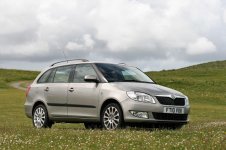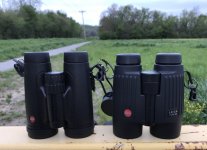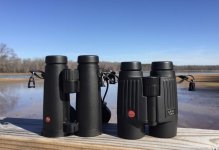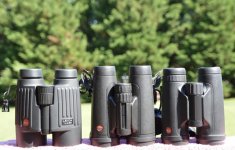Mike F
Well-known member
"In birdwatchers normal conditions these glare, ghosting and flare problems clearly don't matter."
Exactly my point. For birdwatching you will get more performance for the dollar from a modern binocular than you will an old classic like the BN. The things that matter in birding like contrast and brightness are clearly superior in modern binoculars.
This has been a very interesting thread. I have no axe to grind here, but I feel compelled to point out that Yuk (who this thread has been about since he revived it in post #30) stated in that post that he was not a birder! He's looking for a nice all-round bin and the only thing, probably, that doesn't matter to him is what makes a bin good for birding!
I think he should buy the Leica and be very happy. I also agree with those that say that the actual differences in performance between a 10-20 year old binocular and one of the latest alphas is, in reality, small. It all depends on what scale you use. The differences can seem huge if you zoom in on them enough and make the scale very big, but in reality the differences are actually quite small.
I say this as someone who owns a current alpha as well as a few older bins from the same company, and also another modern far Eastern made bin from other manufacturer. I can clearly see (and appreciate) the differences between them, but in reality they are not the sort of differences that anyone but those with a well trained eye and a lot of viewing experience would notice without a direct A-B comparison.









